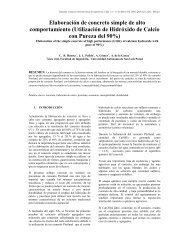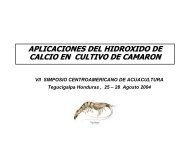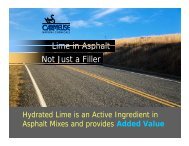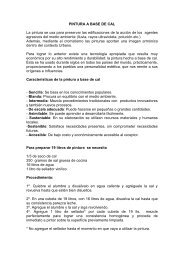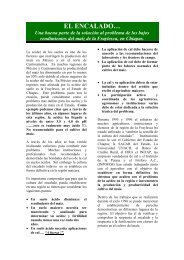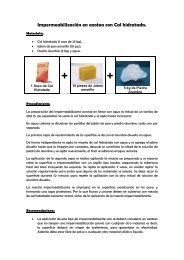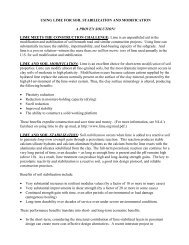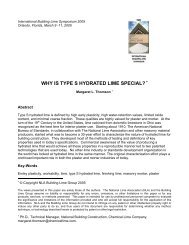Land Contamination: Technical Guidance on Special Sites: Acid Tar ...
Land Contamination: Technical Guidance on Special Sites: Acid Tar ...
Land Contamination: Technical Guidance on Special Sites: Acid Tar ...
Create successful ePaper yourself
Turn your PDF publications into a flip-book with our unique Google optimized e-Paper software.
3. CHEMICAL AND PHYSICAL CHARACTERISTICSOF THE PRINCIPAL CONTAMINANTSKEY QUESTIONS ANSWERED IN THIS SECTION1. What are the chemical and physical characteristics of acid tars?2. What classes of chemicals are found?3. What typical c<strong>on</strong>centrati<strong>on</strong>s of these chemicals could be expected?4. What specific c<strong>on</strong>taminants are found?5. How do the main c<strong>on</strong>taminants behave in the envir<strong>on</strong>ment?3.1 ScopeThis secti<strong>on</strong> presents an overview of the characteristics of acid tars. It includes informati<strong>on</strong>relating to their chemical and physical form, toxicity and behaviour in the envir<strong>on</strong>ment.Key informati<strong>on</strong> <strong>on</strong> the physical properties of acid tars is given in secti<strong>on</strong> 3.2 whilst secti<strong>on</strong>3.3 provides chemical characterisati<strong>on</strong>. Comments are also made <strong>on</strong> breakdown products ofacid tars and mobility of chemicals present within the envir<strong>on</strong>ment. A list of the chemicalsthat are potentially present in acid tar lago<strong>on</strong>s is in Appendix B.3.2 Physical Properties3.2.1 Viscosity<strong>Acid</strong> tar is thixotropic i.e. it is relatively solid, becoming more liquid when agitated. It has arelatively low density of approximately 1.3 t<strong>on</strong>nes/m 3 (lower than soil) and the viscosityvaries markedly with temperature, becoming less viscous and more free-flowing during thesummer m<strong>on</strong>ths as the tars warm. In such c<strong>on</strong>diti<strong>on</strong>s, tars may ‘bleed’ and rise throughcovering materials above to spread laterally across the surface. Depth c<strong>on</strong>siderati<strong>on</strong>s areimportant; with the surface layers typically being weathered to leave a thick and crustysurface, whilst more liquid c<strong>on</strong>diti<strong>on</strong>s exist at depth.As discussed in Secti<strong>on</strong> 2, the viscosity of acid tars varies with the refining process that gaverise to them (white oil refining generally giving rise to thicker tars than benzole refining).Viscosity also varies with the specific process c<strong>on</strong>diti<strong>on</strong>s such as c<strong>on</strong>tact time of acid with theoils being refined and so c<strong>on</strong>diti<strong>on</strong>s may be highly heterogeneous within the same lago<strong>on</strong> ordisposal site.R&D <str<strong>on</strong>g>Technical</str<strong>on</strong>g> Report P5-042/TR/04 15



